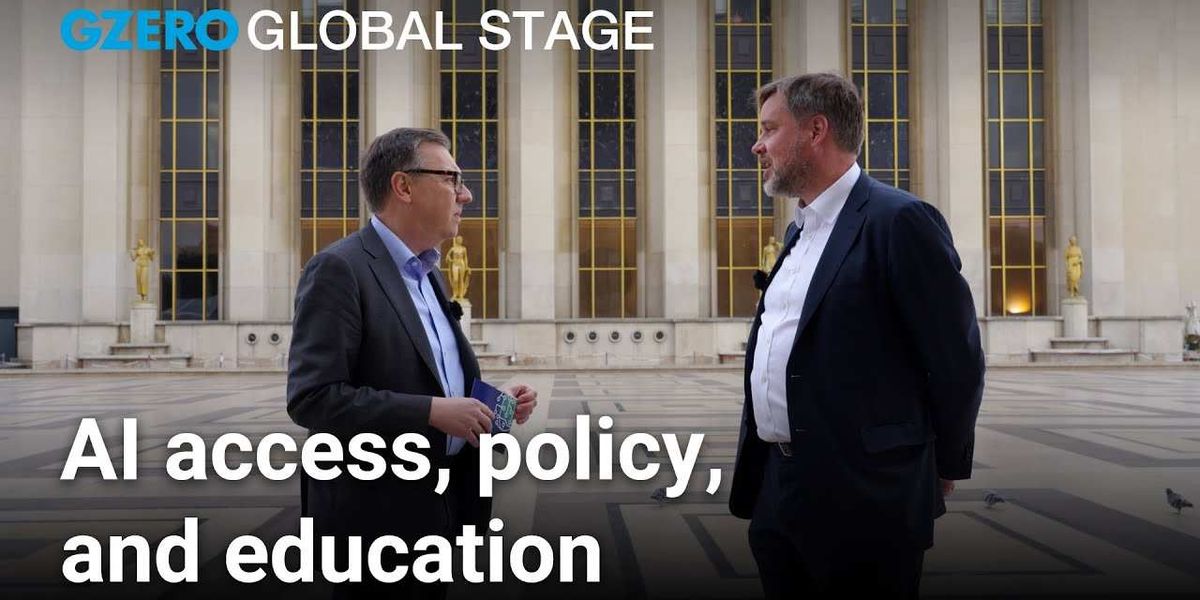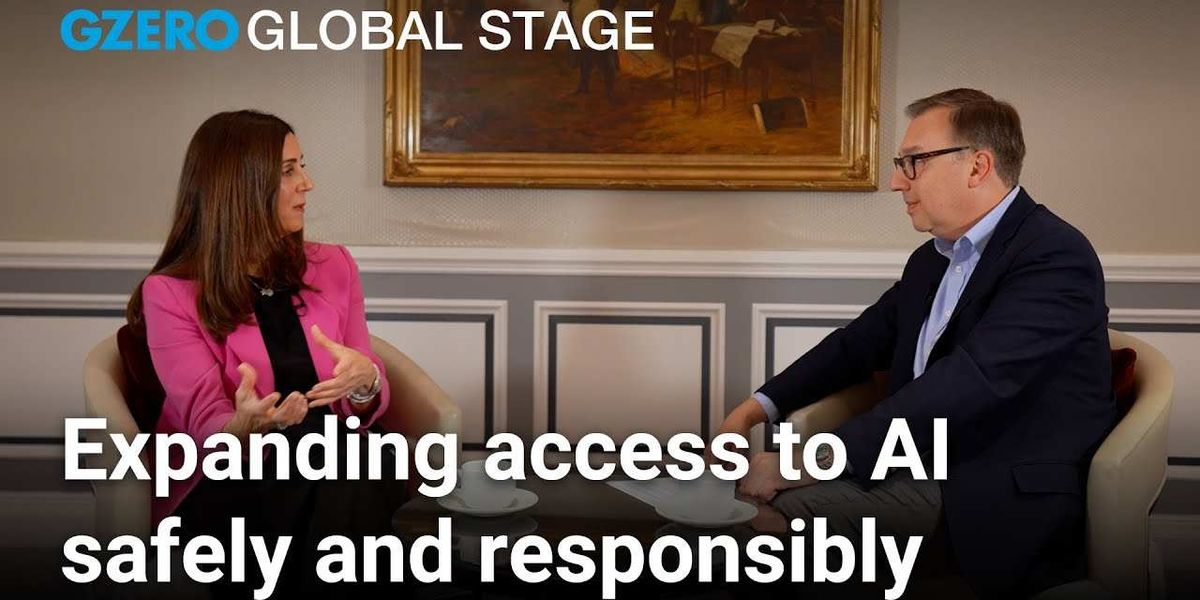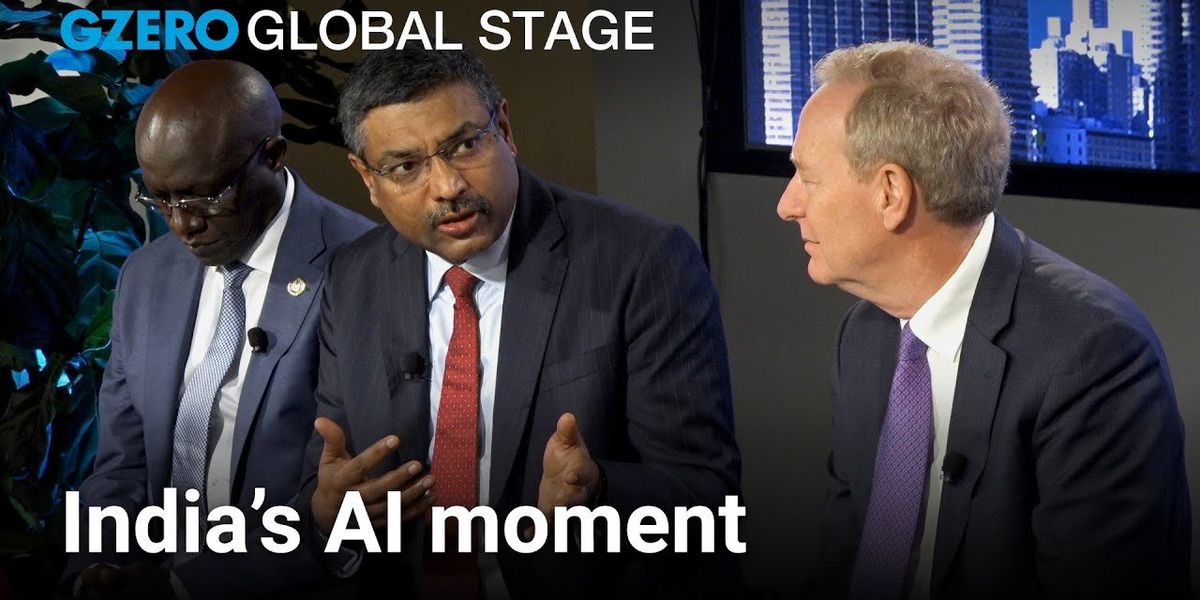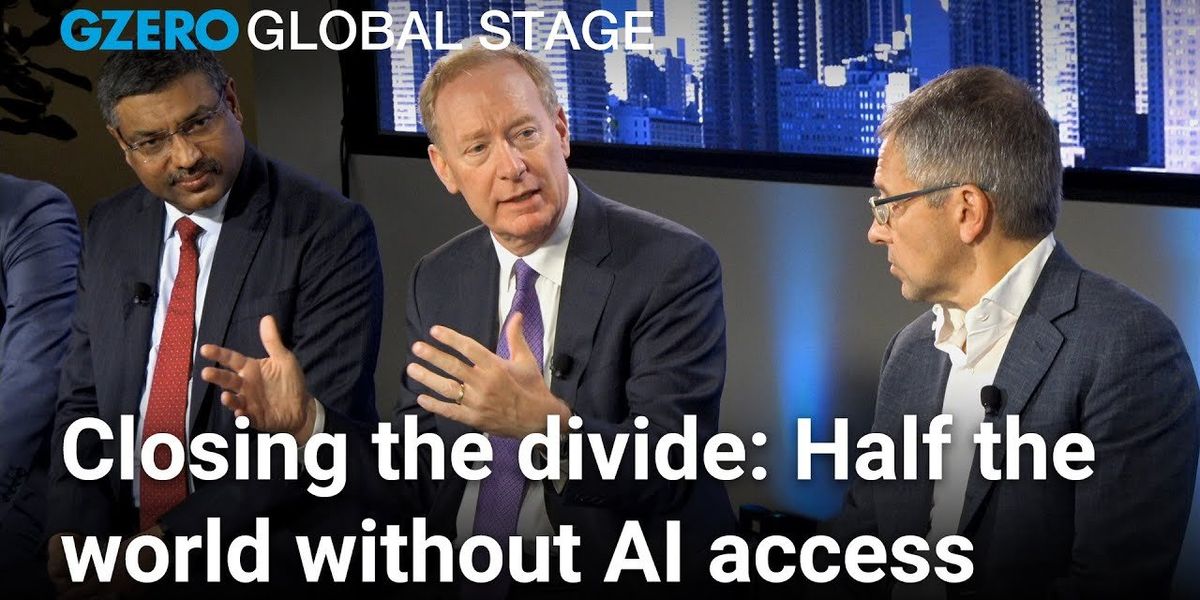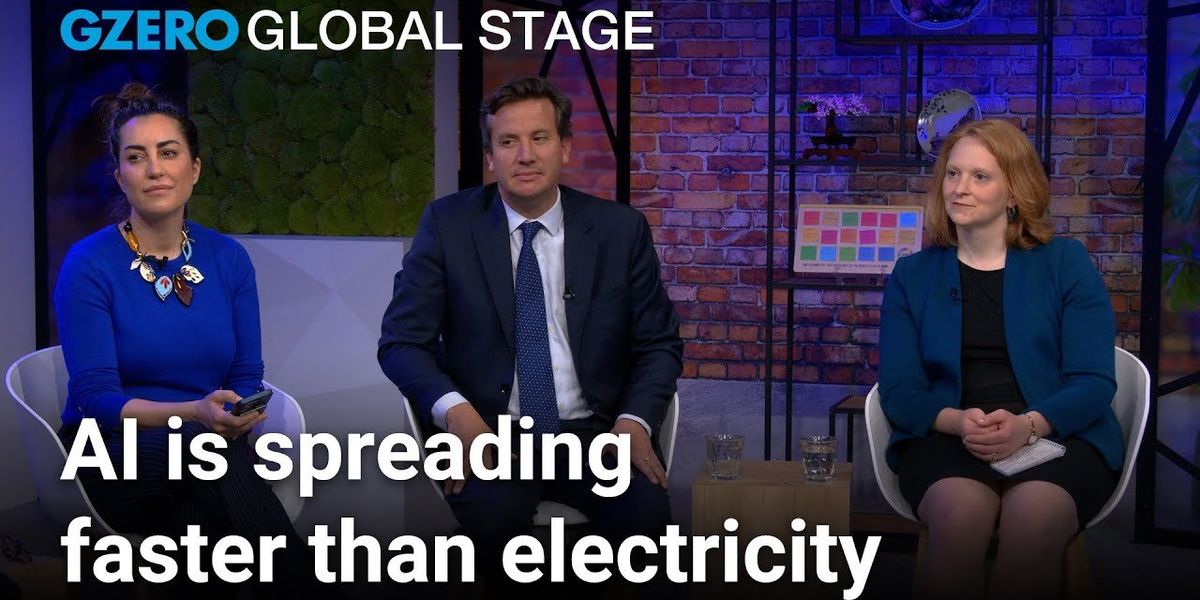Trending Now
We have updated our Privacy Policy and Terms of Use for Eurasia Group and its affiliates, including GZERO Media, to clarify the types of data we collect, how we collect it, how we use data and with whom we share data. By using our website you consent to our Terms and Conditions and Privacy Policy, including the transfer of your personal data to the United States from your country of residence, and our use of cookies described in our Cookie Policy.
{{ subpage.title }}
Live premiere today at 11 AM ET: Global Stage at the Abu Dhabi Global AI Summit
LIVE PREMIERE TODAY AT 11 AM ET: What does it take to build AI economies? Our global experts explore this question, touching on data infrastructure, skilling, and governance, in a conversation at the inaugural Abu Dhabi Global AI Summit.
Watch our live premiere of "Global Stage: Bringing AI Technology, Trust, and Talent to the World" today at 11:00 AM ET at gzeromedia.com/globalstage. The panel was recorded live in front of an audience of global leaders, investors, and technologists attending the Abu Dhabi Global AI Summit, presented by G42, Microsoft, the Responsible AI Future Foundation (RAIFF) AI Future Foundation (RAIFF), and Eurasia Group. The event was held on November 2-3 at the Abu Dhabi Energy Center.
The discussion is moderated by CNN anchor Becky Anderson, and will feature a distinguished panel including Ian Bremmer, President and Founder, Eurasia Group and GZERO Media; Baroness Joanna Shields, Executive Chair, Responsible AI Future Foundation; Brad Smith, Vice Chair and President, Microsoft; and Peng Xiao, Group CEO, G42.
This livestream is the latest in the award-winning Global Stage series, a partnership between GZERO and Microsoft that examines critical issues at the intersection of technology, politics, and society.
Join us on Monday, November 3, 2025 at 11:00 AM ET at gzeromedia.com/globalstage to watch the live premiere.
Live Premiere from the Abu Dhabi Global AI Summit | Global Stage: Bringing AI Technology, Trust, and Talent to the World
AI access, policy, and education
As AI adoption accelerates globally, questions of equity and access are coming to the forefront.
Speaking with GZERO’s Tony Maciulis on the sidelines of the 2025 Paris Peace Forum, Chris Sharrock, Vice President of UN Affairs and International Organizations at Microsoft, discusses the role of technology in addressing global challenges.
“Not every country is starting from the same point,” Sharrock says, highlighting the risks of an “exponential divergence” between advanced economies and the Global South. Drawing on his experience in both government and the private sector, he emphasizes the importance of dialogue across public, private, and nonprofit sectors to shape effective policy.
Sharrock also reflects on AI in education, urging careful integration of AI tools alongside human learning.
This conversation is part of GZERO Media’s Global Stage series, presented in partnership with Microsoft.
Putting "power back into people" with AI
Her foundation aims to help nations in the Global South build sovereign AI systems to bridge the gap in AI advancements and promote equitable access to cutting-edge technology.
Shields also warns of AI’s darker side, noting its role in amplifying online harms for children and calling for a universal “age signal” to make digital spaces safer. Still, she remains optimistic: “We can do things so much more efficiently, so much more humanely, and in ways that put power back into people.”
This conversation is presented by GZERO in partnership with Microsoft.
India’s race to leverage AI by 2047
"India must leverage this technology to become a developed country by 2047. If not, we risk growing old without ever having grown rich," says Secretary S. Krishnan, Ministry of Electronics and Information Technology for the Government of India.
With 1.4 billion people, India has a narrow window to reach developed-country status by 2047. Leaders stress that AI, frugal innovation, and low-cost solutions could unlock that opportunity—and offer lessons for the wider Global South.
Watch more Global Stage coverage from the 80th Session of the United Nations General Assembly here: gzeromedia.com/globalstage
The AI divide: Who gets left behind?
Almost 4 billion people lack the infrastructure to participate in the AI revolution. Can business and policy leaders ensure technology narrows, not widens, the global gap?
Vice chair and President of Microsoft, Brad Smith says, "AI will either help close the great divide economically in the world, or it will make it wider." With billions lacking power, internet, and digital literacy, the stakes are high.
Smith argues that only bold partnerships between governments and companies can ensure AI lifts everyone.
Watch more Global Stage coverage from the 80th Session of the United Nations General Assembly here: gzeromedia.com/globalstage
AI can only help people who can access electricity and internet
Hundreds of millions of people now use artificial intelligence each week—but that impressive number masks a deeper issue. According to Dr. Juan Lavista Ferres, Microsoft’s Chief Data Scientist, Corporate Vice President, and Lab Director for the AI for Good Lab, access to AI remains out of reach for nearly half the world’s population.
In this Global Stage conversation from the 2025 STI Forum at the United Nations, Ferres outlines the barriers that prevent AI from reaching its full potential: lack of electricity, limited internet connectivity, and inadequate access to computers. Even when those hurdles are cleared, many people face another challenge—AI systems that don’t speak their language.
Most large language models are trained in a few dominant languages like English, Spanish, or Mandarin, leaving millions of speakers of local or Indigenous languages excluded from the benefits of AI. “Once you revisit the whole funnel,” Ferres says, “you have likely around half the world that do not have access to this technology.”
Bridging these divides, he argues, is essential—not just for equity, but for unlocking AI’s promise as a truly global force for development and inclusion.
This conversation is presented by GZERO in partnership with Microsoft, from the 2025 STI Forum at the United Nations in New York. The Global Stage series convenes global leaders for critical conversations on the geopolitical and technological trends shaping our world.
See more at https://www.gzeromedia.com/global-stage
